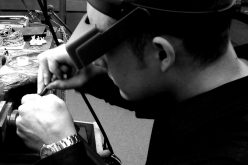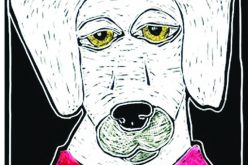BECCA MARTIN-BROWN
bmartin@nwaonline.com
Shabana Kauser’s artwork exists at an intersection of time, place, gender and culture that might, without hyperbole, be called unique.
She is from South Asia — Kashmir, to be specific — and grew up in the 1990s in London. But despite their immigration, her family “held onto traditions and values they knew,” expecting her to “marry someone of my parents’ choice, a man I had never met, never seen, didn’t know anything about, fit into an expected role of a housewife and conform.” Neither did they encourage her creative aspirations, even though her mother was a talented seamstress who custom made the traditional “Shalwaar Kameez,” which Kauser describes as a tunic top, pants and a dupatta (traditional scarf) to match the outfit.
“I embraced both cultures, [but] my path was always different to my parents’ generation and many around me,” she says. “As a first-generation immigrant, those constant challenges of belonging and acceptance existed in both cultures.
“At the age of 21, I rejected what was expected from me, finding the courage to stand up to my parents and an entire community, where everyone around me remained silent, or assured me it’s the expected thing to do, was a tough battle,” she remembers. “On the outside looking in, it’s very easy to share what you would do in a given situation; the reality of what people actually do when they face tough circumstances, isolation, unsure of how they will financially survive and live, are two very different things.
“I was fortunate to live in a country that gave me choices, and the freedom to carve my journey,” Kauser goes on. “I have always struggled with conformity. Being on the receiving end of sexism and racism has been present all my life. Having choices, following my own decisions and path has been survival.”
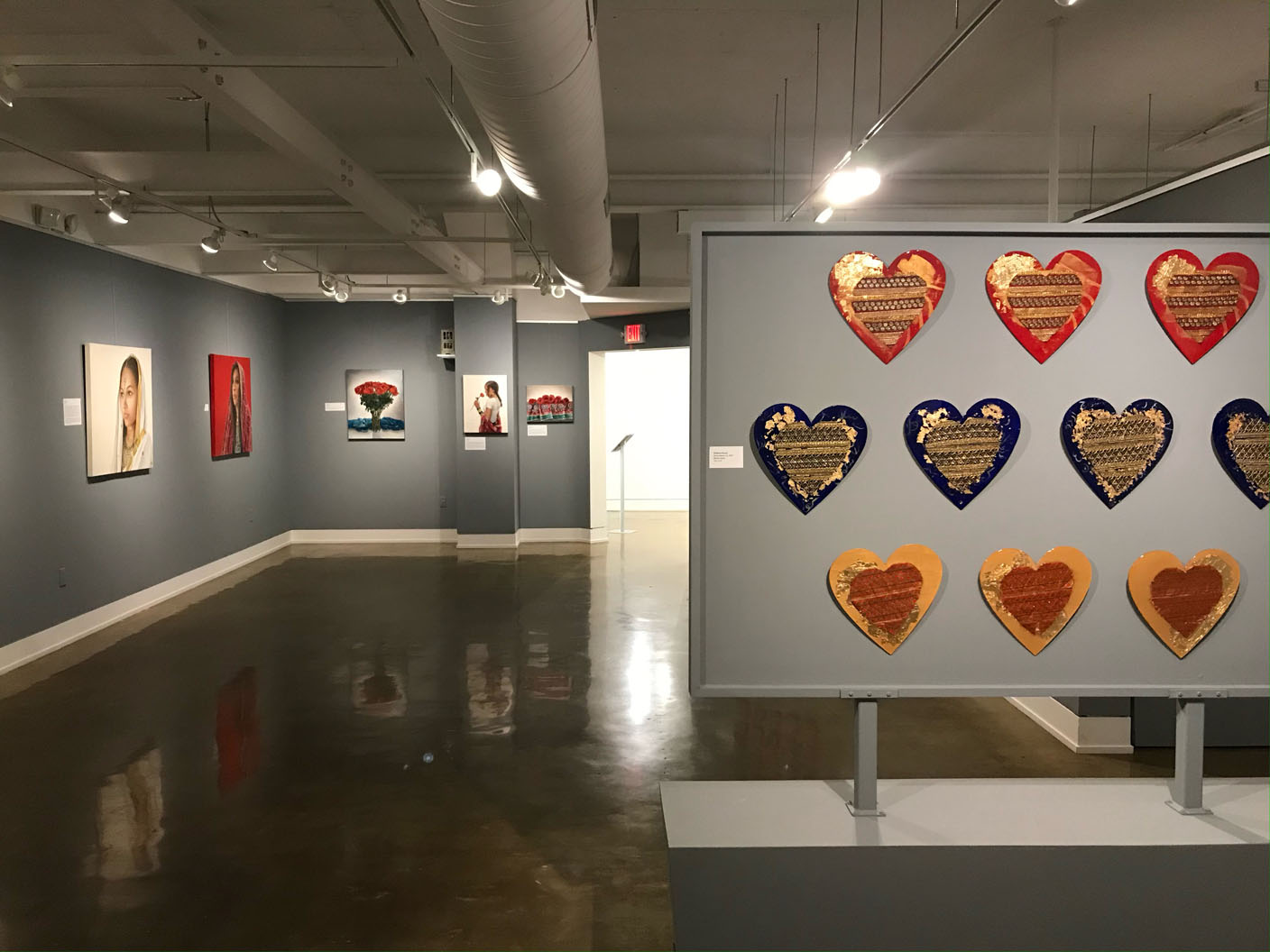
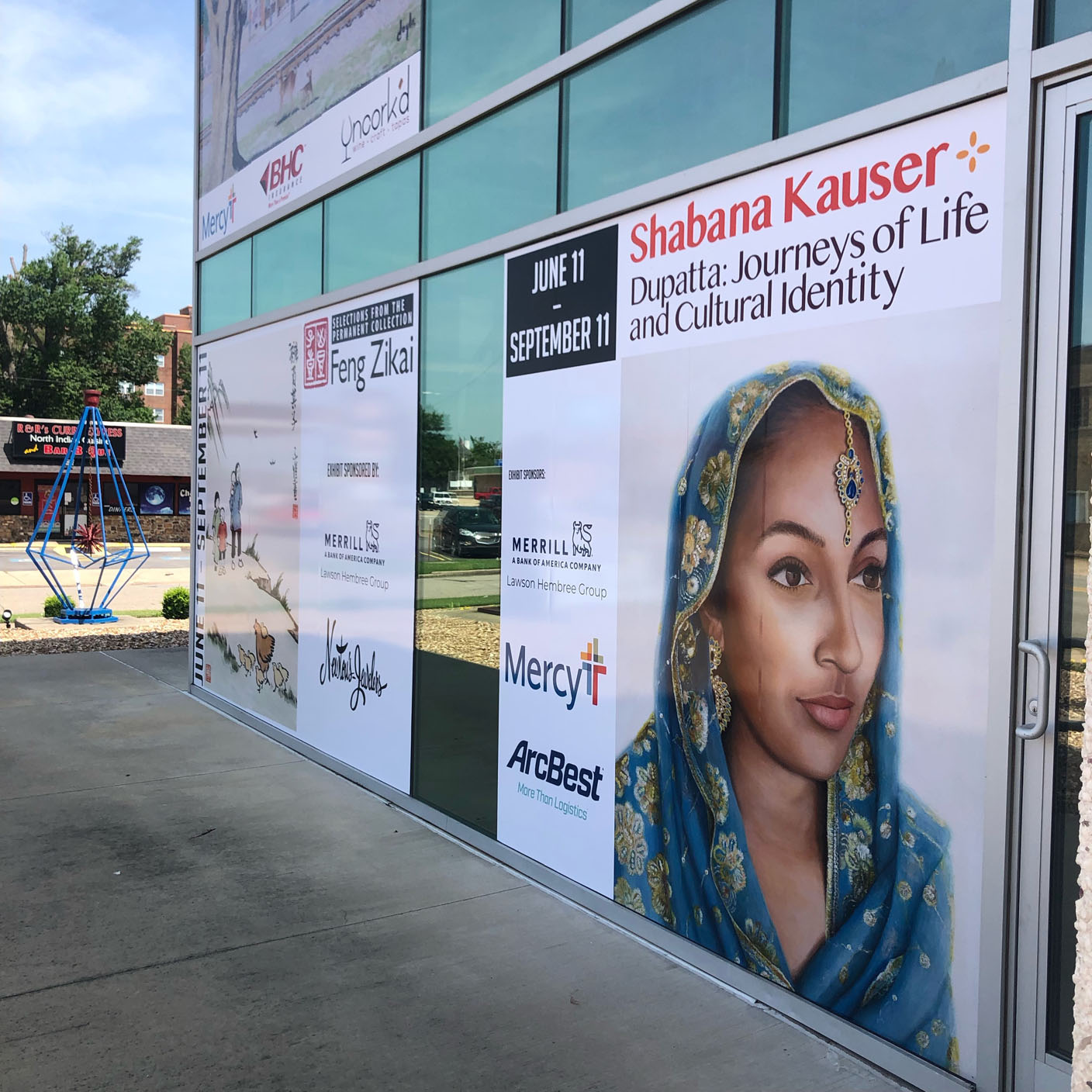
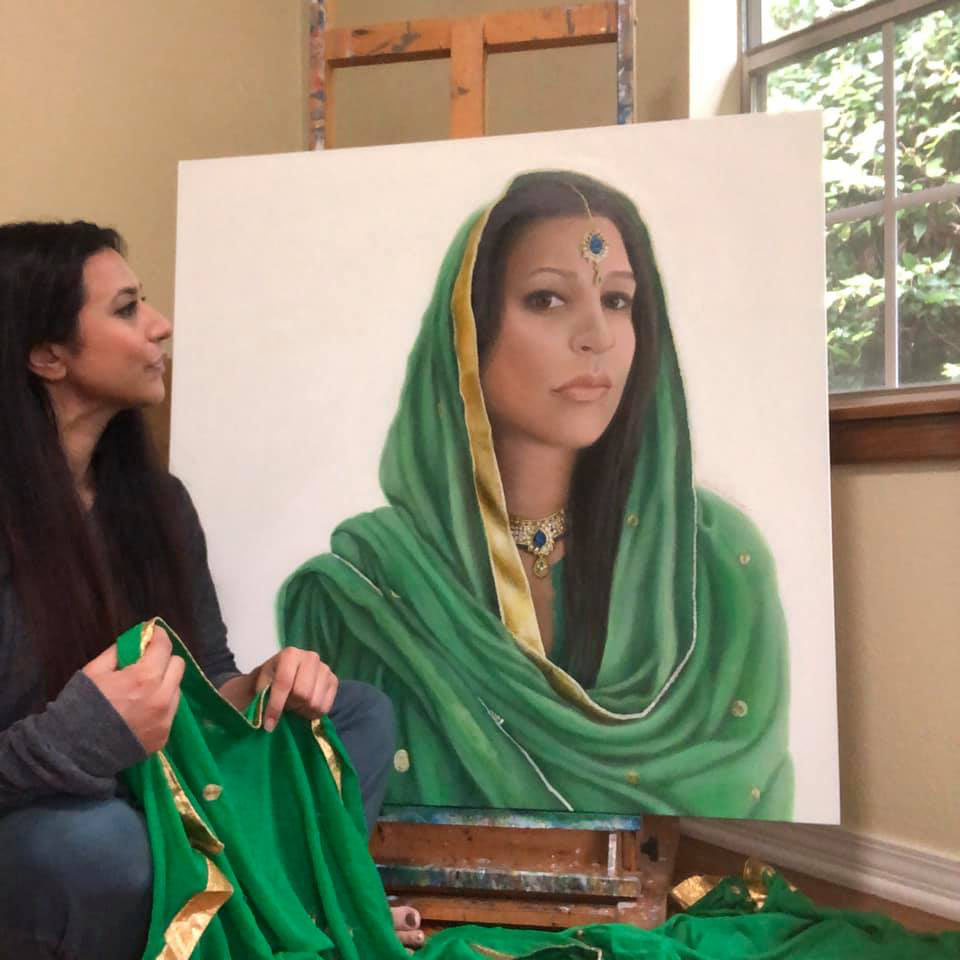


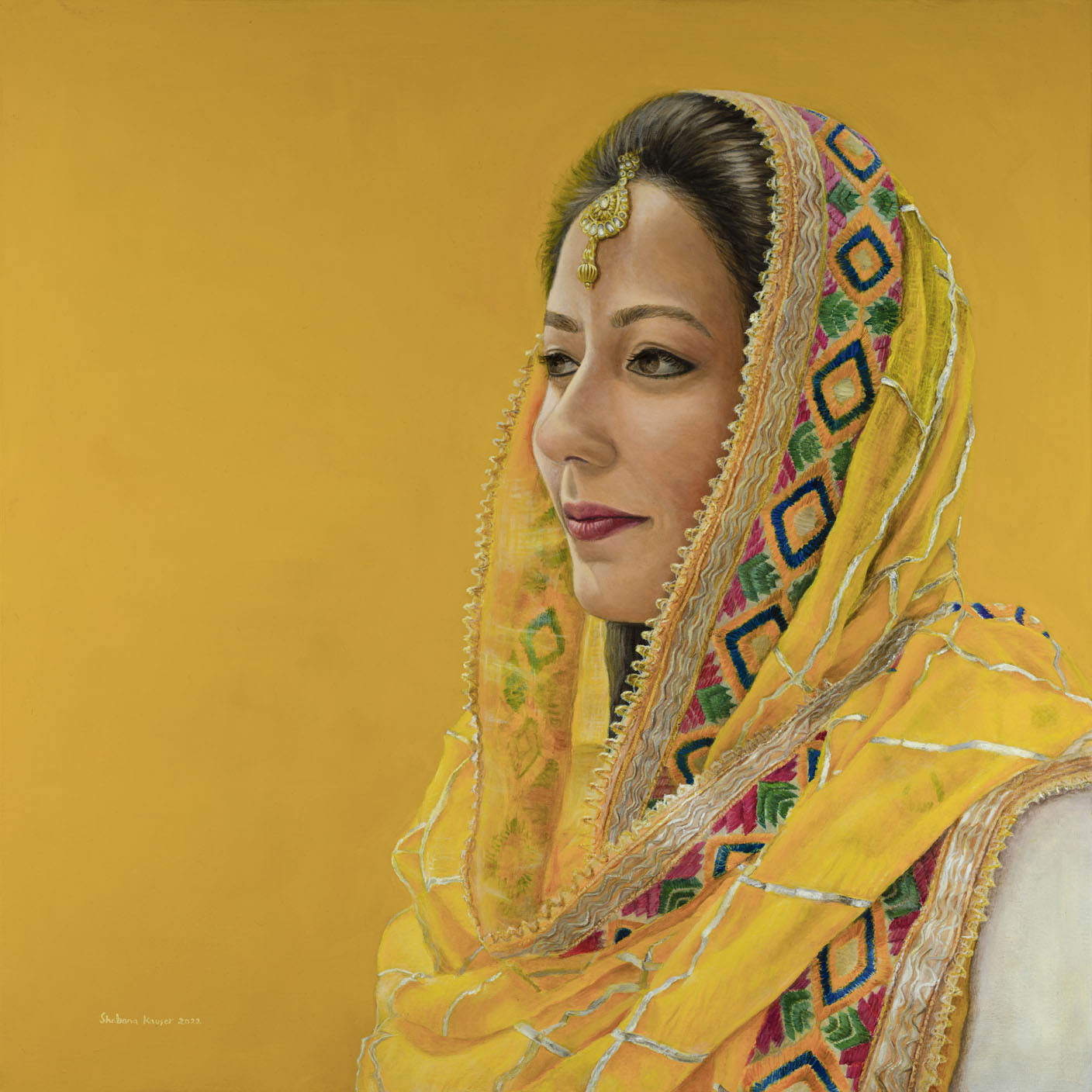

Although she put art on the back burner, Kauser excelled in another non-traditional career for women, earning a bachelor’s degree in Information Technology and a master’s in Information Management. Then her life took a turn even she could not have predicted.
“My husband was offered a work opportunity in Northwest Arkansas in 2008. We left the bright lights of London, our careers in the corporate world … took the leap of faith and moved to the U.S. to start a new life.
“Sadly, for me that journey had a bumpy start,” Kauser explains. “Due to visa laws at the time, I was unable to work for about seven years. It was very isolating; I felt lost and disconnected for a long time. I volunteered with various organizations in the community to keep my mind active, [but] it was never enough. It was only until I discovered my passion for creating, things changed for the better. Once my green card arrived, I decided to follow my passion with art and have my first exhibition.”
Kauser says her art is “directly influenced” by everything in her life up to that moment.
“The immigration experience involves uncertainty, changes and adaptation,” she says. “Being the daughter of Pakistani immigrants to the U.K. and an immigrant to the U.S. myself, it’s amazing how you look for ways to achieve something rather than spending too much time with the problem. My parents always had a strong work ethic and a ‘can do’ attitude, and that is what I’ve always known. That mind set has helped me many times, [and] one crucial time was discovering my passion art and aiming at opportunities that seem unattainable.”
But Kauser also embraces the opportunity to be “a living female artist of color.”
“Female artists represent a small percentage of works shown in museums and top tier galleries,” she explains. “The number of artists of color present in that sector of the arts is also low. Now imagine, being female and South Asian, that percentage is even lower. I am proud to keep fighting for my work, for it to be seen in venues where I am underrepresented.”
That’s why, even though she been fortunate to have had a number of solo exhibitions in galleries across the United States since she introduced her work to the community in 2017, having the chance at her first solo museum exhibition at the Fort Smith Regional Art Museum “is a proud moment not just for me, but for family, friends, collectors and a number of communities that have been supporting my work from the early days,” she says.
“Over the past few weeks, I’ve had a number of artists, from all backgrounds, approach me and let me know how proud they were. They were pleased to see my first solo museum exhibition and a name that typically wouldn’t been seen or heard of in the arts. A South Asian, living, female artist, showing her work in a museum.
“I [also] like hearing how my work is enjoyed by visitors. Everyone absorbs and appreciates art so differently,” Kauser muses. “Visits from groups of school children are some of the best; for some of them it’s the first time they have seen paintings of women from the South Asian culture. They have questions, love the colors, enjoy looking at the artwork up close and more.
“Being a Pakistani women in America, where I can express myself through my art, so far has been very powerful. Each one of the stories behind my work has a universal message of strength, courage, determination, uncertainty, belonging and acceptance. That resonates with people regardless of their gender or background.”
__
FAQ
‘Dupatta: Journeys of Life and Cultural Identity’
WHEN — Until Sept. 11; hours are Tuesday-Saturday, 11 a.m.-6 p.m., and Sunday, 1-5 p.m.. Private tours can also be arranged with the museum.
WHERE — Fort Smith Regional Art Museum, 1601 Rogers Ave. in Fort Smith
COST — Free
INFO — fsram.org and shabanakauserart.com


